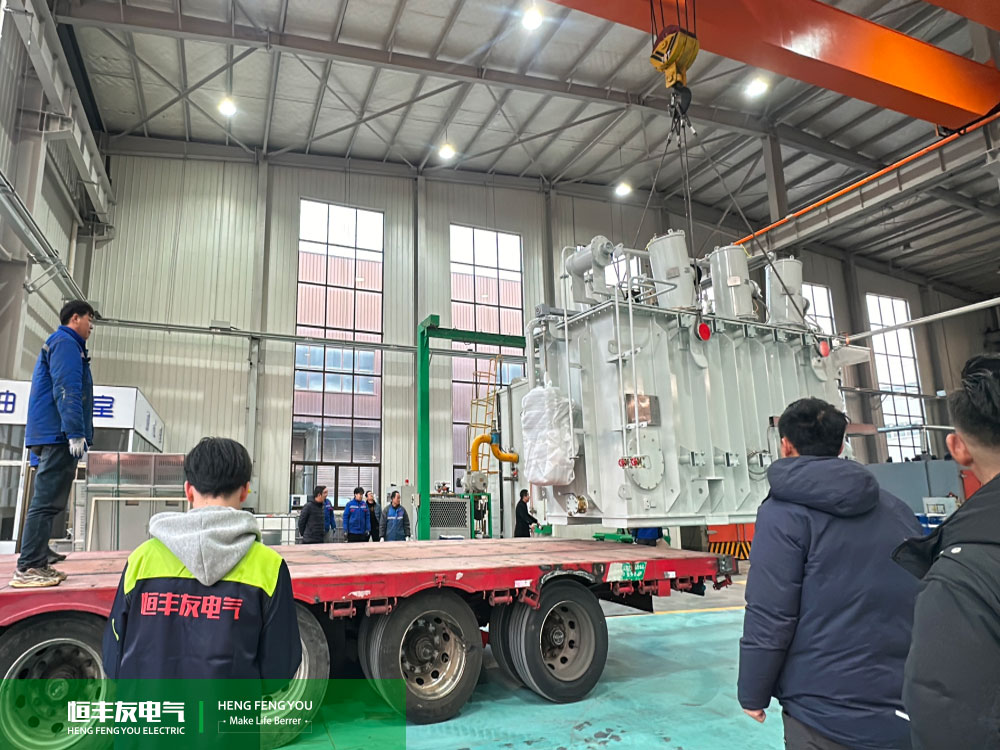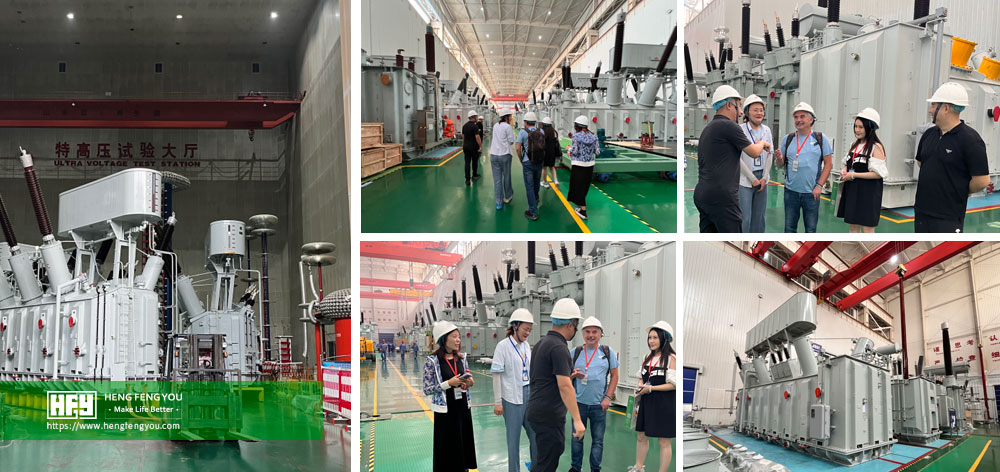II. 75 MVA-110KV Power Transformer Type
1. Cooling Method:
-ONAN (Oil Natural Air Natural): Oil-immersed, self-cooled. This is the most basic and common cooling method, relying on natural convection of the transformer oil and natural air circulation for heat dissipation. For a capacity of 75 MVA, radiator banks are typically required.
-ONAF (Oil Natural Air Forced): Oil-immersed, air-forced cooled. Cooling fans are installed on the radiator banks. The fans automatically start when the load or oil temperature reaches a set value, significantly improving heat dissipation capacity. This is the standard configuration for 75 MVA class transformers.
-OFAF (Oil Forced Air Forced): Forced-oil, forced-air cooled. An oil pump is used to force the circulation of transformer oil, supplemented by powerful fan cooling. This method offers higher efficiency and is commonly used for larger capacity transformers. However, for 75 MVA, ONAF is usually sufficient.
2. Number of Windings:
-Two-winding transformer: This is the most common type, featuring only one high-voltage winding (110kV) and one low-voltage winding (typically 10.5kV, 11kV, 35kV, etc.). It is used for a single voltage transformation.
-Three-winding transformer: This type has one high-voltage winding (110kV) and two medium-voltage/low-voltage windings (e.g., 35kV and 10kV). It is used in hub substations that need to supply power to two grids of different voltage levels simultaneously.
3.Voltage Regulation Method:
-Off-circuit tap changing: Requires de-energizing the transformer to manually adjust the tap changer. It has a small voltage regulation range (typically ±2×2.5% or ±5%). It is suitable for applications where voltage fluctuations are minimal and frequent voltage adjustment is not required.
-On-load tap changing (OLTC): (This is the absolute mainstream configuration for 110kV class transformers today.) It allows for automatic or manual adjustment of the tap position while the transformer is energized and under load, maintaining a stable output voltage. This is crucial for grid interconnection and ensuring power supply quality. The regulation range is typically ±8×1.25% or similar.
III. 75 MVA-110KV Transformer Standard & Certification
-
Standards: GB, IEC, GOST, EN, NF, ANSI/IEEE (customizable according to customer standards)
-
Certification: ISO、CE、IEC、SABS、COC、CSA、UL
-
Efficiency: The efficiency of a 75mva transformer is greater than 99%, which can meet the European 2015/2014/548/EC ecodesign Tier 2 energy efficiency regulations.
-
Maintenance free: IP65 protection level, dustproof and moisture-proof, maintenance free, designed for a lifespan of over 25 years.
-
Environmental protection and sustainable development: FR3 vegetable oil can be selected.
-
Overload capacity: Copper coil 75mva transformer allows short-term overload to 150% of rated capacity for no more than 2 hours, but requires monitoring of oil temperature (≤ 95 ℃).
IV. 75 MVA-110KV Power Transformer Price
The cost of a 75 MVA transformer is project-specific. As a leading manufacturer, HENGFENGYOU ELECTRIC provides high-value, competitive pricing without compromising on quality and reliability.
To get an accurate price for your 75MVA-110KV power transformer, please provide us with your technical requirements or request a quote. Our engineering and sales team will respond within 24 hours with a comprehensive offer.
>>>Get More 75mva-110kv Power Transformer Price Now!
V. 75 MVA-110KV Transformer Case

Our goal is to become the world's leading manufacturer of electrical equipment. The business, experience and technology accumulated over the years have benefited customers in more than 50 countries around the world. Once our customers establish a cooperative relationship, they are long-term trusted customers, because Hengfengyou always insists on providing you with our best electrical products and services.

VI. 75mva Power Transformers FAQ
Q1: What is a 75mva power transformer?
A 75mva-110kv power transformer is a high-voltage electrical device used to step up or step down voltage in power transmission and distribution systems, typically connecting substations between 110kV (primary side) and lower voltages (e.g., 10kV, 35kV).
Q2: What are the common types of 75mva power transformers?
By Cooling Method: Oil-immersed (ONAN/ONAF/OFAF), dry-type (rare for 110kV).
By Function: Step-down (110kV→lower voltage), step-up (e.g., generator output to grid).
By Phase: Three-phase or single-phase (usually grouped for three-phase systems).
Q3: What are key parameters of a 75mva power transformer?
Voltage ratio: 110kV/(10.5kV, 35kV, etc.).
Impedance voltage: ~10.5% (varies by design).
Cooling class: ONAN (oil-natural air-natural), ONAF (forced air).
Vector group: YNd11, YNy0, etc.
Q4: What standards apply to 75mva power transformers?
IEC 60076 (international)
IEEE C57.12.00 (US)
GB/T 6451 (China)
Q5: What are the key steps for 75mva power transformer installation?
Site preparation: Foundation, oil containment, fire safety.
Transport & positioning: Use specialized tools to avoid shocks.
Oil processing: Filtration and degassing (for oil-filled units).
Tests: Insulation resistance, turns ratio, DGA (dissolved gas analysis).
Q6: How is a 75mva power transformer commissioned?
Pre-energization checks (oil level, grounding, protections).
No-load test: Measure excitation current and losses.
Load test: Verify temperature rise and performance.
Q7: How to monitor 75mva power transformer health?
DGA: Detect faults via gas analysis (e.g., methane, hydrogen).
Temperature: Oil/winding temperature alarms (e.g., 95°C alarm).
Partial discharge (PD) tests: Detect insulation defects.
Q8: What is routine maintenance for 75mva power transformers?
Annual oil testing (dielectric strength, moisture).
Bushing and cooling system inspection.
Tightness check for gaskets and connections.
Q9: What are common transformer faults?
Insulation failure: Due to aging or moisture.
Overheating: Caused by overloading or cooling system failure.
Bushing leaks: Oil leakage or cracks.
